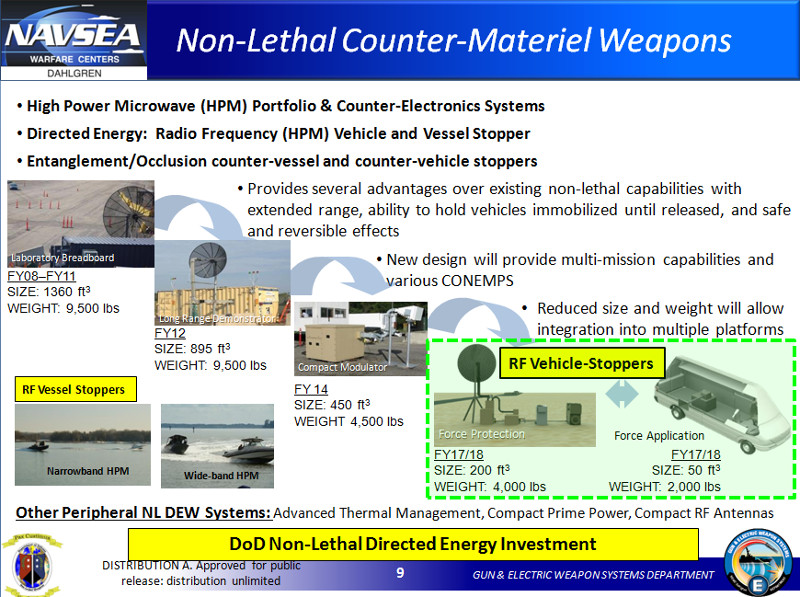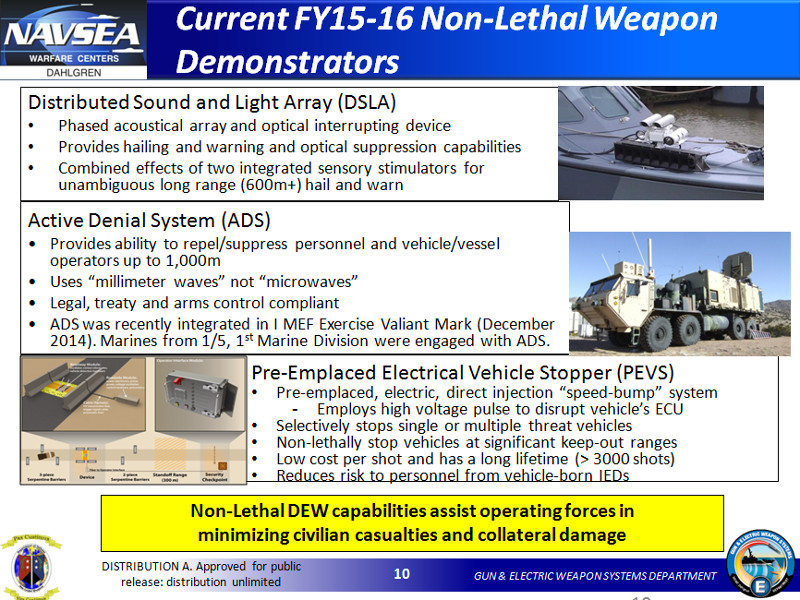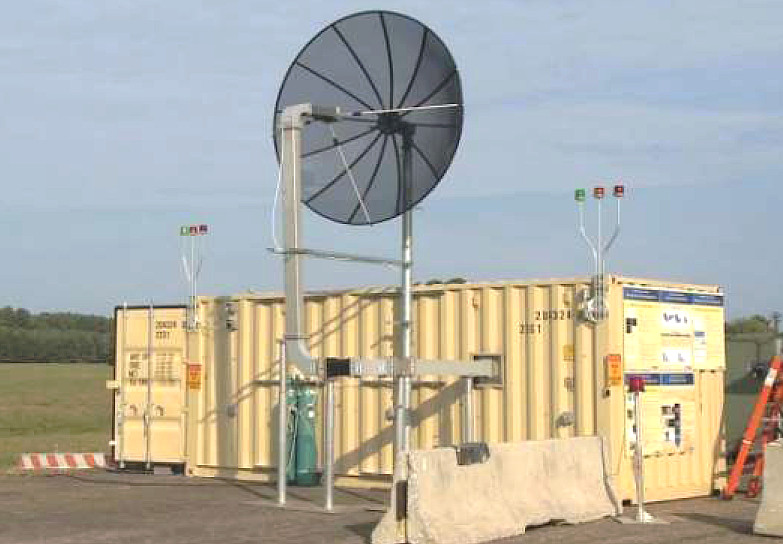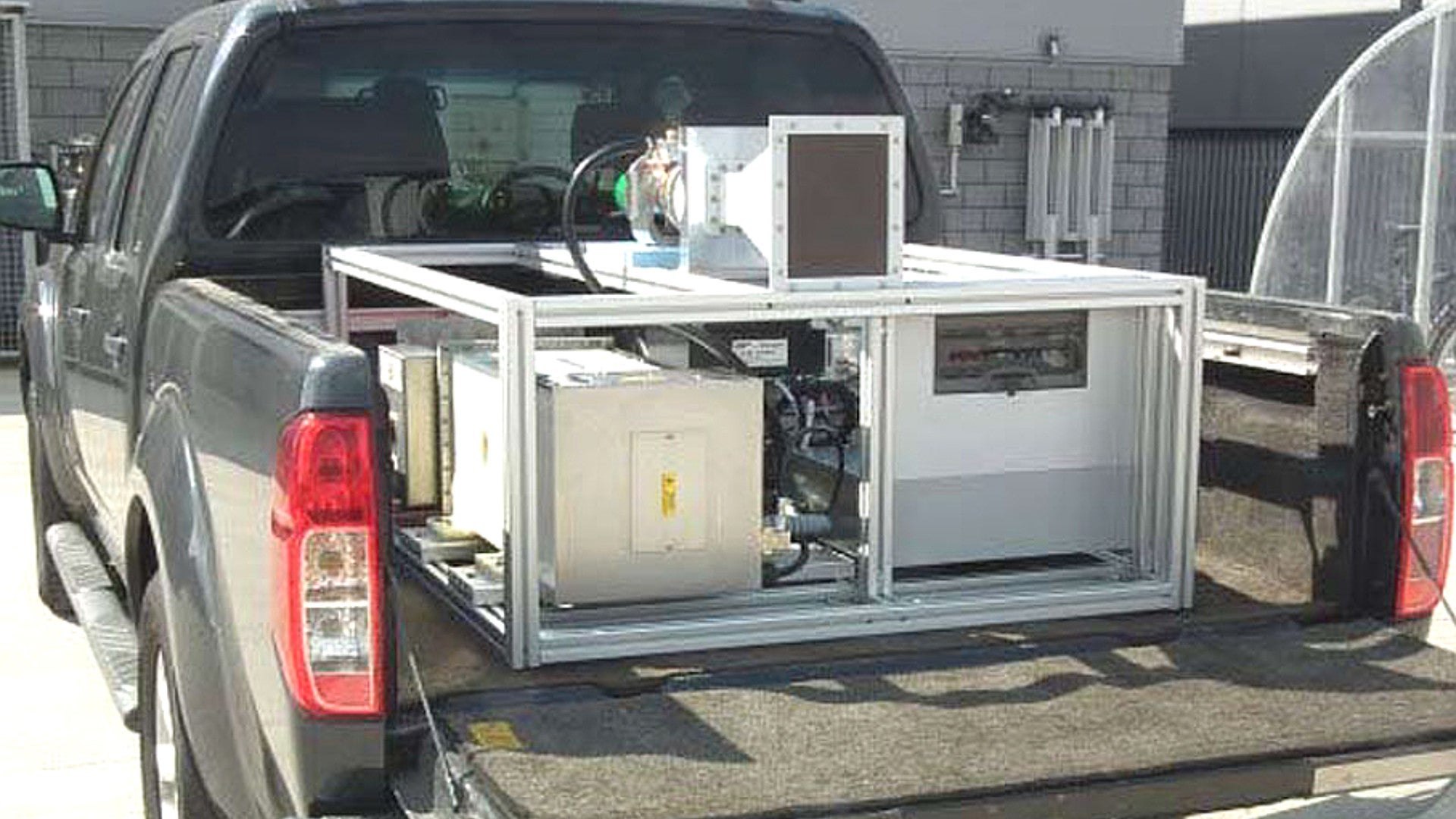Extremists and militants around the world are increasingly turning to suicide car bombs, as well as unmodified vehicles, for terrorist attacks and killing sprees both on the battlefield and regular city streets. Now, the U.S. military hopes it is getting close to crafting a practical radio frequency jammer that might be able to stop those threats dead in their tracks with high-powered microwaves.
The Pentagon’s central less-than-lethal weapon office, called the Joint Non-Lethal Weapons Directorate (JNLWD), is in charge of the project, which it formally refers to the Radio Frequency Vehicle Stopper (RFVS). Though the concept dates back even further than that, the U.S. military has been actively working on the program since at least 2007 and the goal is to demonstrate a relatively portable prototype suitable for actual operations by the end of 2019. Scientists and engineers have already used experimental versions to demonstrate how the system works, at least in principle, against vehicles on land and small boats.
“Anything that has electronics on it, these high-powered microwaves will affect,” David Law, head of the JNLWD Technology Division, told Defense One in March. “As long as the [microwave beam] is on [target], it holds the vehicle stopped.”
At its most basic, the concept is fairly simple. An array of microwave emitters shoots out a beam of energy that jams electronic devices, such as the control unit in an engine, effectively shutting it down.

At present, Law’s team is working on two variants, one for “force protection” and another for “force application.” Both are not supposed to harm a vehicle’s occupants in any way.
The force application type is small enough to fit on the back of a truck and could be used to stop a fleeing vehicle or to defend convoys on the move. This could also be useful for law enforcement personnel attempting to stop a specific suspect vehicle or a small smuggling boat. JNLWD says the present prototype of this system has an effective range of approximately 160 feet, according to Defense One.
The force protection version is larger and supposed to defend static sites, such as checkpoints and base entry points, against car and truck bombs and similar threats. With added power and a larger microwave array, it reportedly has more than twice the range of the mobile type.
It’s not clear just how big either RFVS system is. A 2016 briefing we at The War Zone obtained said the goal was for the final force protection design to be around 4,000 pounds and fit into 200 square foot area, while the force application type would be half that weight and quarter the overall size.

Law told Defense One that the fixed system is, at least in its present form, three times larger than the mobile one. A model of the force application system that Defense One observed looks very similar to one called the RF Safe Stop from a company in the United Kingdom called Teledyne E2V, which weighs around 780 pounds, which could mean JNLWD’s larger system is less than 2,500 pounds. If so, that would represent a significant reduction in its overall weight in the past two years.
If JNLWD Technology Division can come up with a functional prototype, the benefits are clear. The microwave beam would be a much more capable and flexible option than existing vehicle stopping equipment.
These systems, such as spike strips, caltrops, and portable nets and barriers, don’t always produce uniform results depending on the size of the vehicle and its speed. Personnel often have to reset them after a single vehicle passes over or through them.
The video below shows personnel from the North Dakota Army National Guard’s 191st Military Police Company testing a Portable Vehicle Arresting Barrier (PVAB).

With its high-power microwave, the RFVS would be better able to stop a vehicle and keep it immobilized regardless of how big it is or how fast it’s moving, so long as the individual manning it can keep the beam on the target. A more automated system, with cueing from electro-optical, infrared, or other sensors would be even more capable and might be more quickly able to shift focus from one target to another. This latter functionality would be especially important in dealing with complex multi-vehicle attacks in which there might be decoys to distract from the most pressing threat, such a large truck bomb.
In addition, unlike the other presently available options, the system JNLWD is working on does not run the risk of causing any permanent damage. This means that if troops or law enforcement make a mistake in employing the final RFVS in the future, they will not have accidentally destroyed private property, or worse. With this in mind, police, border guards, or similar security personnel might be able to eventually employ a smaller version with more localized effects to hold cars in place during routine traffic stops or at checkpoints and then release them afterward.
As of 2016, the JNLWD was also working on exactly this kind of system, called the Pre-Emplaced Electrical Vehicle Stopper (PEVS), which it described as a sort of electronic “speed bump.” Using highly localized pulses of microwave energy instead of a constant beam, it could target single vehicles or small groups of mobile threats, but would not necessarily be able to hold them in place indefinitely.

But there are still hurdles for Law and his team to overcome before any version of the RFVS, or similar system, is ready for operational use. The biggest remaining impediment, according to Defense One, is power. It takes a lot of energy to run a suitably powerful microwave beam continuously for an extended period of time.
In September 2018, JNLWD expects to take delivery of a 400-pound, 300-kilowatt generator from Candent Technologies. Previously the RFVS had to use generators weighing thousands of pounds, which helps explain why the original laboratory demonstrators had a total weight of nearly 10,000 pounds.
The system will also need additional features to help keep everything cool and there have been plans to develop smaller microwave emitter arrays to reduce both size and weight even further while maintaining the desired effective range. Perhaps more problematically, the RFVS concept does nothing to stop a vehicle’s momentum, meaning that an incoming vehicular threat could keep rolling toward its target even after the engine cuts out.

There are more nuanced issues, as well. High powered microwaves can destroy electronics if the beam is powerful enough. This means JNLWD will have to take steps to ensure the system produces a steady stream of energy at the appropriate power level no matter what the range and in spite of smoke, dust, or other particulate matter in the air that might cause the waves to fluctuate. There also might be an unavoidable risk to occupants with pacemakers or other electronic medical implants.
Otherwise, it is possible that anyone employing a production RFVS might inadvertently destroy a vehicle. The possibility of doing so, or even the perception that it might be possible for this to happen, could create a reluctance to actually use it for fear of something going wrong. Very firm rules of engagement might help mitigate those concerns.
Of course, with variable power controls, the system might be more multi-purpose, able to act as a short-range air defense or active protection system that could disrupt or destroy the fuzes or guidance systems on incoming missiles and rockets or vital electronics on small unmanned aircraft. JNLWD itself has previously posited that a variant of the RFVS might have the ability to destroy the fuzing systems on car and truck bombs or even pre-detonate them before they got close to their targets.
BAE Systems is already pitching a more powerful high-powered microwave system as a close-in self-defense weapon system for ships. Boeing has delivered a number of Counter-Electronics High-Power Advanced Microwave Project (CHAMP) missiles to the U.S. Air Force as a stand-off means of knocking out enemy command and control, communications, and air defense nodes. The Air Force and Navy are presently working together on the secretive High-power Joint Electromagnetic Non-Kinetic Strike (HiJENKS) program and there have also been reports over the years that suggest there are more exotic, possibly operational high power mircowave weapons in the classified realm.

But even with the ability to fine-tune the power levels and the size of the beam, the system may not be precise enough to use in near large groups of innocent bystanders without the risk of unintended effects to civilians or friendly forces. Especially in a densely packed urban area, such as a sprawling “megacity,” an environment where conflicts are increasingly likely to occur as time goes on, it might be difficult to single out a threat.
Any other electronics caught between the emitter and that target would also experience a disruption. So, depending on the vector of the attack and the position of the RFVS relative to other friendly positions, turning it on could risk knocking out communications or other systems at a critical moment.
Similar problems would quickly become apparent in any attempt to transition the technology to law enforcement use, even though it could potentially be of great use in defending against vehicular terrorist attacks, such as the one that just occurred in Toronto, Canada on April 23, 2018. Police forces would only be under even greater scrutiny to avoid damaging private property, somehow causing injuries or death directly or indirectly, or just inconveniencing members of the general public with blasts of electronics disabling microwave energy.
When it comes to using the U.S. military using the system in a force protection role, the plan is already for any final RFVS design to be part of a layered concept that includes other non-lethal and lethal weapons, which could help mitigate some of these limitations. But it remains to be seen if, after more than a decade of development, the high-powered microwave beam can be a truly useful addition to that defensive arsenal.
Contact the author: jtrevithickpr@gmail.com
